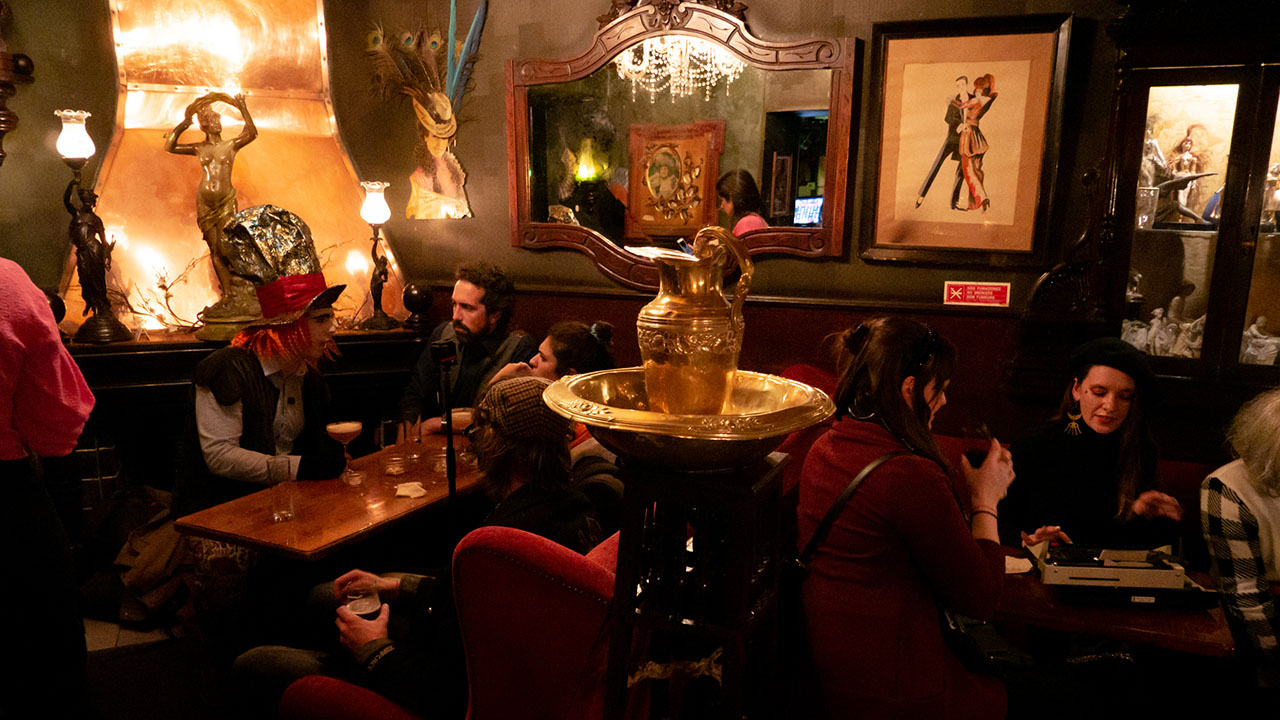WXO Case Studies tell the story of how experts across the Experience Economy have faced challenges, solved problems, and either pioneered new ideas or just figured out how to make something work really well.
We believe these experience-based ideas are highly transferable, and that you should be able to take what they discovered in their sector, and apply it in your area of the Experience Economy. If you’d like to share your own case study with the WXO community, please get in touch.
Lisbon-based immersive experiences company Imercita and WXO member Shahrzad Behzadian tell us the story of how they launched Follow the White Rabbit, an immersive journey based on Alice in Wonderland that looks to engage participants with each other and help them discover new and hidden spaces in the city.
- The experience guides guests through six different locations. Every part of the story happens in a different location. The experience turns guests into characters from the book as they arrive in Wonderland. The underlying gamification of the story engages them into interactions among themselves and with performers.
- Imercita partners with local businesses, art galleries and places to introduce their spaces through the story. Each space is chosen to be a secretive and interesting hidden room behind the obvious. The actors and clues of the story are plotted into the location and navigation is done through an app.
- They’ve done six episodes of this immersive experience in the last three months, and sold out for the last four episodes. There will be 19 more episodes in Lisbon as well as 25 episodes in Barcelona and Madrid, the next cities in which the experience will launch.
- This is the first of many upcoming experiences that will be produced by Imercita. They plan to expand their stories as a tech company that works with creative experience designer teams to co-create city-wide immersive experiences.
Who’s our Hero?
We believe stories Start With Who – so who’s the hero of this one? Who had a problem to solve?
The experience is designed to create a sense of meaningful connection and create an opportunity for the discovery of “cool” places. The audience in Lisbon is therefore mostly expats or progressive locals interested to meet new people and get out of their routines and discover new places.
What did the Old World look like?
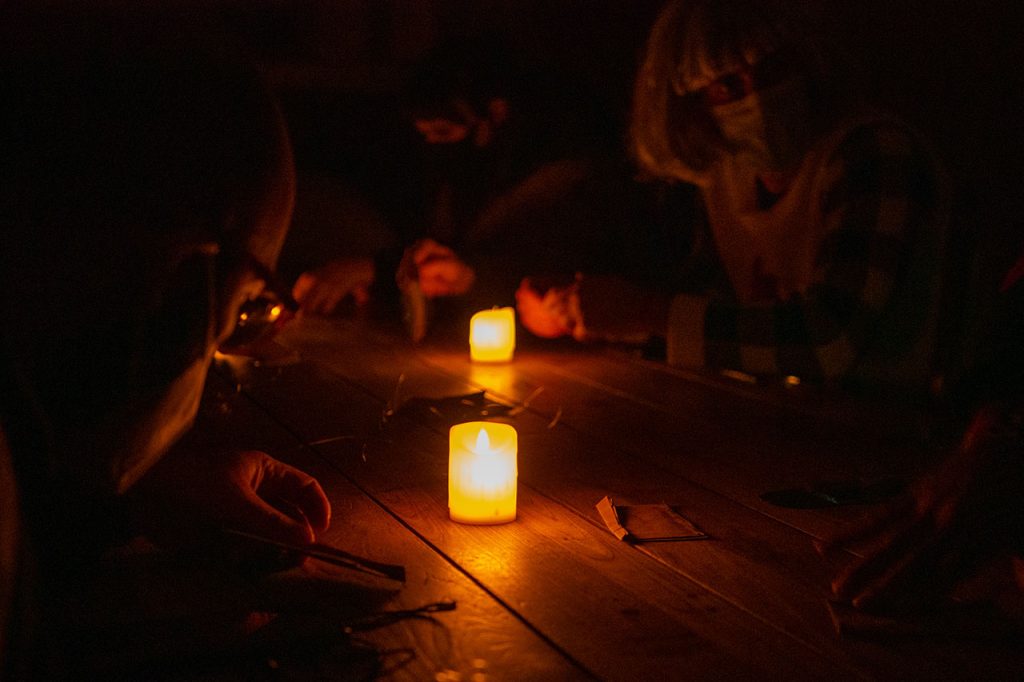
How were things going? What was good or bad?
The Old World was very disconnected. Events, journeys and gatherings did not have a “hook” for participants to express themselves and connect in a meaningful way. Moreover, the process of discovering places in a city is essentially broken and narrows down to commercial purposes. Experiential marketing is an important factor in introducing people and places, but is usually only available to big commercial entities with deep pockets, and not to artists. Our purpose was to curate meaningful places and people with interesting stories and introduce them through alternate realities and interactions such as Wonderland.
What was the Call to Adventure?
What was the problem, either “out there” – in society, the industry, the world – or “in here” – the firm, the community?
The immersive experience space is location dependent. It is mostly available in certain cities such as Paris, London and New York City. Through our model, every experience and journey can be replicated in new cities by empowering local spaces. This creates the opportunity to launch low-cost immersive experiences in new cities using proven concepts from the Old World.
Who was your Mentor?
Did the people going on this journey have a mentor – either a real person or a way of thinking?
Design sprints with the artists that play roles, feedback from guests of every episode, trading thoughts with theatre directors, and experience designer friends.
Why did you at first refuse the Call?
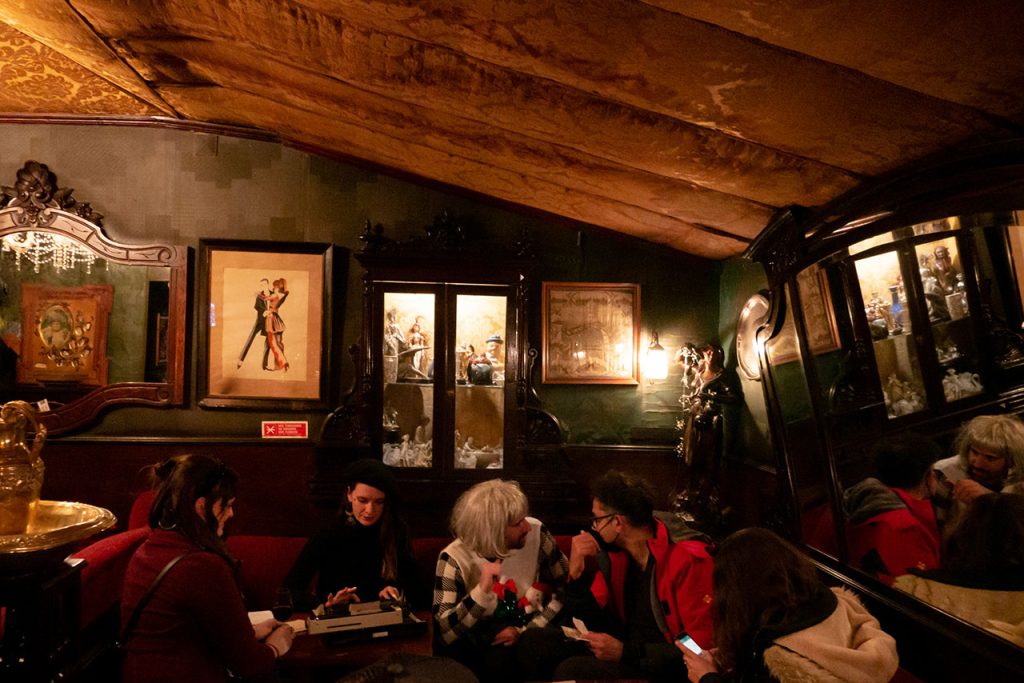
Why didn’t you action this before?
I postponed production because I wanted it to be perfect, until I decided to spontaneously produce a basic concept for my birthday. This lifted the pressure to produce something interesting, as it was for my friends. Although it was immensely imperfect, it created lots of feedback on the unique concept of a journey and immense interest among my friends in its potential for new friendships and community building. Consequently, two of these friends hired us to create customized journeys for their birthdays, which led to the Alice in Wonderland ticketed experience.
What was the Inciting Incident?
What changed?
When I produced it once in a safe group of friends, despite it being immensely imperfect, it was still fun! After experiencing this, there was no stopping – it could only get better.
What would have happened if you hadn’t Crossed the Threshold?
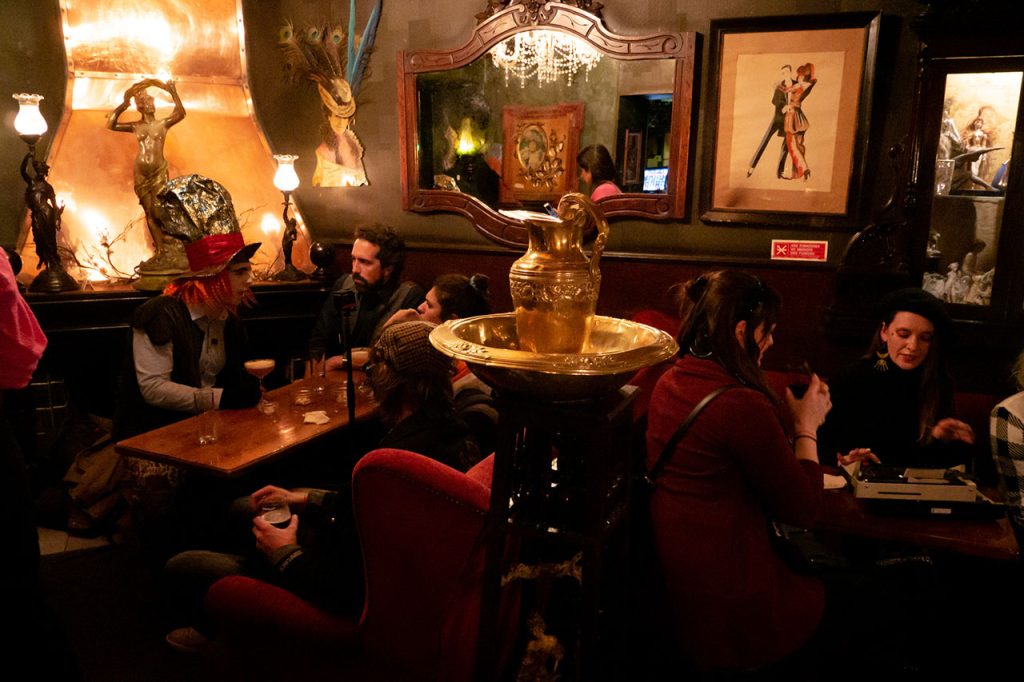
…or done what you’d always done before?
We would have continued producing customized experiences for birthdays. Although this is also an interesting market and a fun design method, it’s also a high price point and not accessible to the general public.
What Trials did you face?

Lack of knowledge? Time? Money? Contacts?
Lack of knowledge on production made it difficult, and lack of local contacts in the artistic community made the growth slow. Going forward, the possibility of new Covid confinements may create new obstacles. On the other hand, they could also present an opportunity to redesign the experience without actors and with multiple timelines for guests.
Who were your Enemies?
Who stood in your way or tried to stop you?
Some potential competing producers and local experience designers, who chose to point out the flaws to the public rather than supporting our team with feedback.
Who were your Allies?
Who was on your side or helped you achieve your goal?
Many of the guests, a few local theatre directors, creative directors, experience designer friends, and members of the WXO community who I reached out to personally and traded thoughts with.
What Tools helped you on this journey?
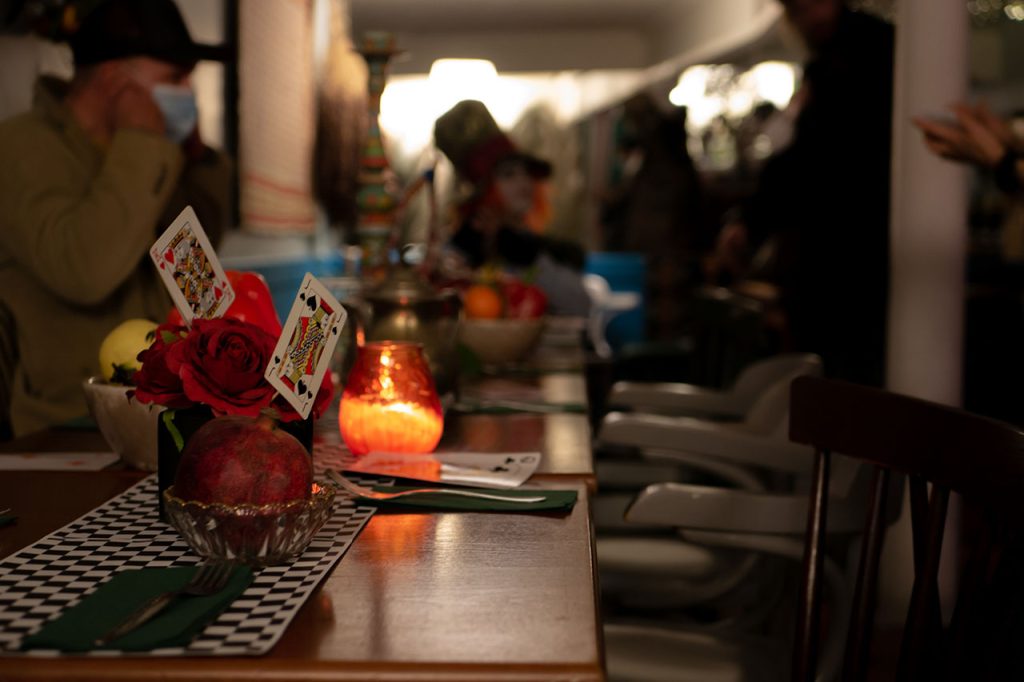
What’s the closest thing you had to King Arthur’s Sword, or Luke Skywalker’s lightsaber?
Journaling!
What was the biggest Ordeal?
What was the toughest challenge you faced?
Immersing the guest into an alternate reality with minimal or zero stage design.
Did you have any “Aha!” moments?
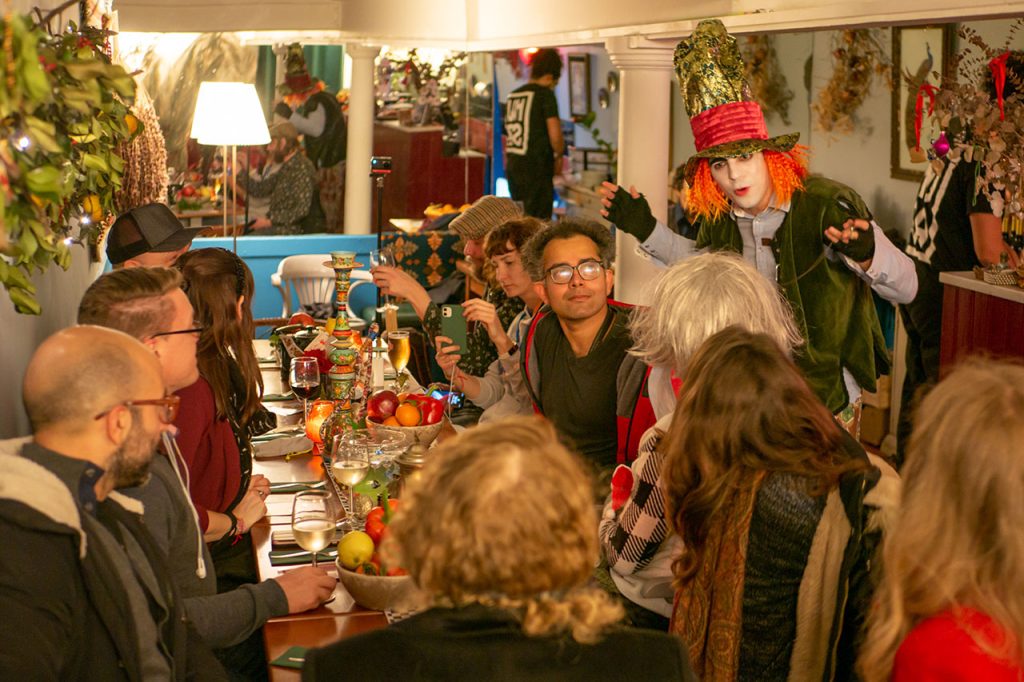
Moments of discovery and inspiration… times when instead of the fog of uncertainty, you suddenly saw the way forward?
Firstly, we thought stage design would be important in building the feel of the experience. However as we moved forward, we learned that the performers’ acting creates the stage. Moreover, increasing the participatory and interactive levels for the guests was more important than any other effort we put into creating a second reality. By creating roles for the guests, they began creating this second reality for each other.
Secondly, we thought the location of every touchpoint should be very close to each other. Later we learned that it’s the consistency of the vibe and intentional space design that facilitates conversation and connection among guests more than anything else.
Finally, we began with larger scripted stories for every performer. The acting has since been reduced to shorter sentences and is more open to reactions from guests. Interestingly, the touchpoints with zero script, which only have a creative director and open the possibility for the artist to be present and improvise, are the most popular parts of the experience. This presents a challenge for sourcing local talent in every new city. But it also presents an opportunity for the level of a guest’s immersive experience to be narrowed down to their engagement and interaction with their environment, which actually brings them into the moment. An effective design is a medium that creates the opportunity for simple interaction that requires their presence at the moment of exchange. It’s therefore important to define touchpoints that create this possibility by reducing the scripted story to zero, replacing it with a general creative direction and increasing real-time interactions with real people.
What was the Reward?
Think in terms of outputs and outcomes: outputs are what you produce, whereas outcomes are what happens as a result of the outputs.
The output is a well-defined structure for the Follow the White Rabbit that can easily be scaled to other cities after we create a local team of artists and partners. The outcomes are the good relationships we’ve built with around 20 local businesses, theirs and previous guests’ endorsements, and the scalable model and insight for the production of new stories and experiences.
How does the New World look now?
Now you’ve faced this challenge, what does it mean for you, your organization, and the world?
It’s easier to become friends with a stranger and step into alternate realities by staying in the physical world, yet using technology to experience connection through our senses.
What might the next Journey be?
Thinking ahead, what might the challenges ahead look like?
Covid confinement and polishing the experience into a non-linear format, which can be experienced at different times yet connects the experiencers to each other.
You can buy tickets for Follow the White Rabbit here.
For more case studies and learning frameworks from the Experience Economy, check our Case Studies page here.

